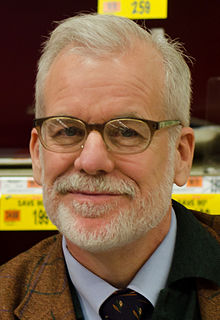Top 76 Quotes & Sayings by Chris Van Allsburg
Explore popular quotes and sayings by an American author Chris Van Allsburg.
Last updated on April 14, 2025.
The whole idea of being mesmerized and not in control of your own actions is fascinating and a little spooky. I remember hearing about someone who'd gone to a magic act, and a person in the audience had become hypnotized by observing too closely what magician was doing on stage, and thought it was spooky to lose your consciousness that way.
I love the idea of a tiny window between the back stoop and the pantry, where the milkman would pass through the cheese. But of course, there is no milkman anymore. So somebody coming by the house and seeing the window would say, 'Oh, that must be original, because that's where the milkman passed the cheese through to the pantry.'



















